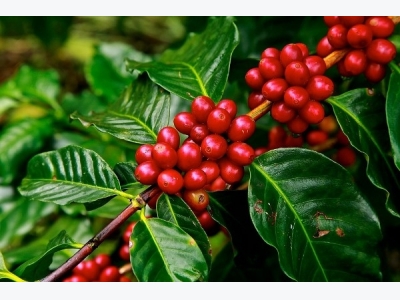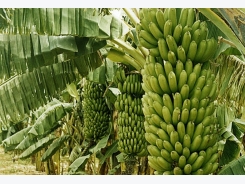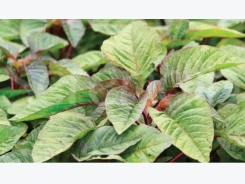Coffee Cultivation Information Guide

Introduction to Coffee Cultivation:- Coffee is one of the flowering plants grown for its seeds called “coffee beans”. These coffee beans are the source of various coffee products and beverages. Coffee trees are small and native to topical regions of South Africa and Asia continent. Coffee production plays major role in widely traded commodity crops in the world. Coffee is one of important major export crop for many countries. There are many species of coffee are grown in the world. However, “coffea arabica” accounts for major portion of coffee production (an about 70 to 80%). Other species of coffee “coffea canephora” is accountable for about 20 % of world production. When it comes to coffee tree and beans, the coffee trees produce purple or red edible fruits (cherries).
These cherries consist of 2 seeds which are called “coffee beans”. Coffee tree is a bush or tree that can grow (reach) up to a height of 10 to 12 feet. The coffee flowers have beautiful smell and are in white colour. Coffee trees can produce beans up to 60 years and start growing fruits after 3 to 4 years (especially Coffea arabica). Commercial cultivation of coffee is an excellent business and can obtain decent profits under ideal orchard management practices. The following article describes about coffee growing (seed to harvest).

Coffee Plantation.
Scientific Name or Botanical Name of Coffee Plant:- Coffee arabica, Coffee robusta.
Family Name of Coffee Plant:- Rubiaceae.
Genus of Coffee Plant:- Coffea L.
Coffee Names in other Country Languages:- Koffie (Dutch), Kawa (Polish),Kaffee (German), Cafè (Catalan), Koffie (Afrikaans), Цайны (Mongolian), qahva / kāfī (Urdu), kafeja (Albanian), kohv (Estonian), Καφές / kafés (Greek), Caife (Irish), 커피 / keopi (Korean), Kafè (Maltese), kaphī/कफी (Nepali), Café (Portuguese), café / tinto (Spanish), qahwa (Arabic), Кафе (Bulgarian), 咖啡 / Kāfēi (Chinese), Kape (Filipino), Caffè (Italian), Kaffe (Norwegian), กาแฟ / Kāfæ (Thai), Cà phê (Vietnamese), Սուրճ (Armenian), ko hpi ( Burmese), Kava (Croatian), kahvinruskea (Finnish), qafé (Hebrew), Kō hī / コーヒー (Japanese), Kafija (Latvian), Cafea (Romanian), ෙක�� /Kopi (Sinhalese), Kahawa (Swahili), Coffi (Welsh), káva (Czech), Café (French), qahva / kofī (Hindi), káfe ( Macedonian), kófe (Russian), Kaffe (Swedish), Kahve (Turkish), ikhofi (Zulu), Kaffe (Danish), ყავა /qava (Georgian), Kávé (Hungarian), Kopi / kahwa (Malay), qahve (Persian), kāphī (Sanskrit),
Top 20 Production Countries of Coffee:- The following are the top twenty production countries of coffee.
- Brazil
- Vietnam
- Colombia
- Indonesia
- Ethiopia
- India
- Honduras
- Uganda
- Mexico
- Guatemala
- Peru
- Nicaragua
- Cote d’Ivoire
- Costa Rica
- Kenya
- Tanzania
- Papua New Guinea
- El Salvador
- Ecuador
- Cameroon

Health Benefits of Coffee.
- Coffee is a good source of antioxidants
- Coffee may lower the risk of Type-2 diabetes
- Coffee can curb depression
- Coffee is good for heart and regular consumption of coffee lower the risk of heart disease
- Coffee can boost a short term memory and lowers the risk of Alzheimer’s disease
- Coffee drinkers can have protection against cirrhosis of the liver. So it is liver healthy
- Coffee can protect against Parkinson’s disease
- Coffee can guard against gout
- Coffee can lower the risk of multiple sclerosis
- Coffee can help in curbing certain type of cancers (reduces colorectal cancer risk)
Varieties (Cultivars) of Coffee:- There are many varieties that fall under Arabica and Robusta species.
Climate Requirement for Coffee Cultivation:- Coffee arabica can grow well in high altitude from 800 to 1600 meters. However Coffee robusta can adapt very well to lower elevations. Growing coffee crop at high altitudes will result in late maturity and susceptible to frost conditions. High winds also damage the crop. Annual rainfall should be evenly distributed and 2,300 mm annual rain fall is required for this crop. Regions having heavy rainfall will result in rotting of leaves and can cause fungal diseases. When it comes to temperature, coffee garden requires 10°C to 27°C (50 to 80°F). In case of high temperatures, it requires shade provision.
Soil Requirement for Coffee Cultivation:- Coffee plants can be grown on a wide range of soils. However, sandy loam soil is ideal for its cultivation. Coffee trees can thrive well in any fertile soil with favourable climatic conditions. For commercial coffee growing to achieve high yields, the coffee crop requires deep permeable soil with good structure rich in organic matter. Water balance of soil is also very important in coffee growing. The ideal pH of soil should be 5.0-6.0 for best yield. It is advised to go for soil test in case of commercial coffee cultivation.
Propagation, Seed Rate and Seed Treatment in Coffee Cultivation:- Coffee plants are propagated through seeds and vegetative cuttings. Seed should be heavy broad and boat shaped and seeds pulp should be removed by hand. The fruits should be rubbed with ash to prevent sticking. These seeds should be dried under shade. The coffee seeds should be sown at 2.5 cm apart. Usually seed density of 4000 to 4500 seeds should be required to cover 1 hectare land. Generally coffee seeds will germinate in 4 to 5 weeks after sowing. Then the seedlings should be uprooted and transplanted in bags or in nursery beds at 25 cm distance.
Seed Propagation: The propagation of seed from the Arabica varieties will give true type plants. Coffee Arabica trees are self-pollinating. Pre-sowing seed treatment with Azospirillum and Phosphobacterium can be done.
Vegetative Propagation: In this method, cutting should be selected are should be free from any diseases should yield more. Make sure to select cuttings which are resistant to leaf rust disease. Proper vegetative selection of coffee plant cuttings is essential to obtain a good plantation and high yields.
Land Preparation, Planting and Spacing in Coffee Cultivation:- The land should be prepared very well in coffee cultivation by removing rocks and any vegetation. Any previous crop weeds should be removed. To achieve fine tilth stage and check weeds, ploughing and harrowing should be carried out 2 or 3 times. If you are growing coffee on commercial scale, soil test should be done and accordingly, any nutrients /micro nutrients should be incorporated in the soil before planting. In case of fertilizers (like phosphorus / lime) they should be thoroughly incorporated into the soil by ploughing and disking several months before transplanting in the field.
Planting distance depends on mainly on variety, topography and soil fertility. The usual spacing of different varieties is given below.
- Coffee Arabica: 2 meter x 3 meter
- Coffee Robusta: 3 meter x 3 meter.
Straight row planting with an east-west orientation is the recommended layout in coffee cultivation.

Coffee Tree.
Usually, coffee is planted during spring season or just before monsoon (rainy season) as it requires moist soil conditions with cool climate. For better seedling emergence, the space between the rows should be 15-20 cm and within the rows, seeds should be placed 3 cm to 5 cm apart with 0.5 to 1 cm depth flat side down.
After growing in nursery (in bags), 6 months old seedlings having about 20 cm height should be transplanted in the main field. Pits / Holes should be dug to loosen up the soil before planting the coffee seedlings in the field. These pits/holes should be dug 2 to 3 months before planting the seedlings. The pits / holes size should be 50 cm x 50 cm x 50 cm (length, width, depth).
Coffee plantation requires partial shade where sunlight is intense hence coffee orchards require having shade trees. Species of Ficus, Terminale sp. Arfocarpus heteophytius, Greviied robustai (Silver oak), Albizy, Lebback, Erythina tillthesperna; Gliricidia maculate and Deucaene glauea can be used as shade trees in coffee cultivation.
Irrigation in Coffee Cultivation:- Different irrigation methods such as drip irrigation, micro-jet, sprinkler irrigation or hose and basin irrigation can be adopted in coffee cultivation. The frequency of irrigation depends on soil type and moisture holding capacity of soil and climatic conditions. Under irrigated conditions, coffee plants require 50 mm and should be applied before planting. Subsequently it requires 25 mm. Generally, the coffee crop requires 20 to 25 mm water for every 10 days interval. It is important to remember to keep the soil moist but not too much of wetness. Over-irrigation results in fungal diseases in coffee plantations. The simple thumb rule is providing 2 irrigations in a week in dry hot climates and 1 irrigation a week in cool winter.
Manures and Fertilizers in Coffee Cultivation:- The following table shows the manure and fertilizer requirement in coffee plantation.
| Species | PreBlossom March N:P2O5:K2O | Post – blossom May N:P2O5:K2O | Mid monsoon August N:P2O5:K2O | Postmonsoon October N:P2O5:K2O | Total |
| Coffee.Arabica: | |||||
| Young coffee 1st year after planting | 15:10:15 | 15:10:15 | - | 15:10:15 | 45:30:45 |
| 2nd and 3rd year | 20:10:20 | 20:10:20 | - | 20:15:20 | 60:45:60 |
| 4th year | 30:20:30 | 20:20:20 | - | 30:20:30 | 80:60:80 |
| Bearing coffee 5 years and above for less than 1 tonne/ha cro | 40:30:40 | 40:30:40 | - | 40:30:40 | 140:90:120 |
| For 1 tonne / ha and above | 40:30:40 | 40:30:40 | 40:30:40 | 40:30:40 | 160:120:160 |
| Coffee.Robusta: | |||||
| For less than 1 tonne/ ha crop | 40:30:40 | - | - | 40:30:40 | 80:60:80 |
| For 1 tonne /ha and above | 40:30:40 | 40:30:40 | - | 40:30:40 | 120:90:120 |
Intercultural Operations in Coffee Cultivation:- In any orchard, giving proper and timely intercultural operations are essential.
- Weed control in Coffee Cultivation: Weed control is an important task in any orchard for healthy growth of plants and getting high yields.
- Mulching in Coffee Cultivation: Mulching can be done in coffee gardens to prevent moisture loss and check the weed growth. This also prevents soil erosion. Mulching also enriches the soil, moderates of excessive soil temperature and improves soil textures.
- Pruning in Coffee Cultivation: This includes part of pole pruning usually carried out once in 4 or 5 years to bring back old coffee to shape again and control un-wanted shoots. Generally, this type of pruning includes removal of dead, dried, and unhealthy branches. This operation should be carried out immediately after harvest.
Pests and Diseases in Coffee Cultivation:- Controlling pests and diseases is essential in any crop cultivation.
- Insect Pests: White stem borer, Antestia stink bug, Leafminer, Mealybug, Black coffee stem borer, Grey coffee snout beetle, Coffee berry moth, and the variegated coffee bug are common pests found in coffee cultivation. For symptoms and control measure of these pests, contact your local horticulture department.
- Diseases: Coffee leaf rust, Coffee berry disease, Tracheomycosis wilt, American leaf spot, Root rot diseases, Rosellinia bunodes, Armillaria mellea, and Cercospora spot are common diseases found in coffee cultivation. For controlling these diseases and symptoms, contact your local horticulture department.
Note:Your local Horticulture is a good source for finding suitable solutions for controlling pests and diseases in coffee Cultivation.
Harvesting in Coffee Cultivation:- Fruit bearing starts from 3rd year onwards after planting. However, good yields can be expected from the 5th year. The coffee trees continue to yield up to 50 to 60 years.
- Fly picking of fruits: Small scale picking of ripe berries of coffee is carried out during the month of October to Feb.
- Main picking of fruits: Well-formed and ripened coffee berries are harvested during December. Most of the bulk yield is obtained from this picking method.
- Stripping of fruits: This method is to pick of all the berries left irrespective of ripening.
- Cleanings of fruits: This is collection of fruits that have been dropped during harvesting.
Post-Harvesting in Coffee Cultivation:- Post harvesting includes the activities of Drying, Grading, Packing, Storage and Transpiration.

- Drying: Drying of beans should be done by either sun drying or mechanical hot air drying, and preferably on shade netting.
- Grading: The dry green hulled coffee beans should be graded according to size and shape by help of a rotating sieve.
- Packing: Coffee beans must be packed into the coffee basket very firmly.
- Storage: The storage room must be dry and well-ventilated in order to prevent from moisture.
- Transportation: Coffee beans should be transported with original bags by transport trucks to the coffee roasting facilities.
Yield in Coffee Cultivation:- Well, yield in any crop cultivation depends on soil type, climatic conditions, cultivar (variety), irrigation/rainfall and other orchard management practices. In Coffee cultivation, one can obtain on average coffee production as given below.
- Arabica – 400 to 700 kg/ha
- Robusta – 350 to 750 kg/ha.
Có thể bạn quan tâm
Phần mềm

Phối trộn thức ăn chăn nuôi

Pha dung dịch thủy canh

Định mức cho tôm ăn

Phối trộn phân bón NPK

Xác định tỷ lệ tôm sống

Chuyển đổi đơn vị phân bón

Xác định công suất sục khí

Chuyển đổi đơn vị tôm

Tính diện tích nhà kính

Tính thể tích ao hồ



 Wheat Cultivation Information Guide
Wheat Cultivation Information Guide  Amaranth Farming Information Guide
Amaranth Farming Information Guide